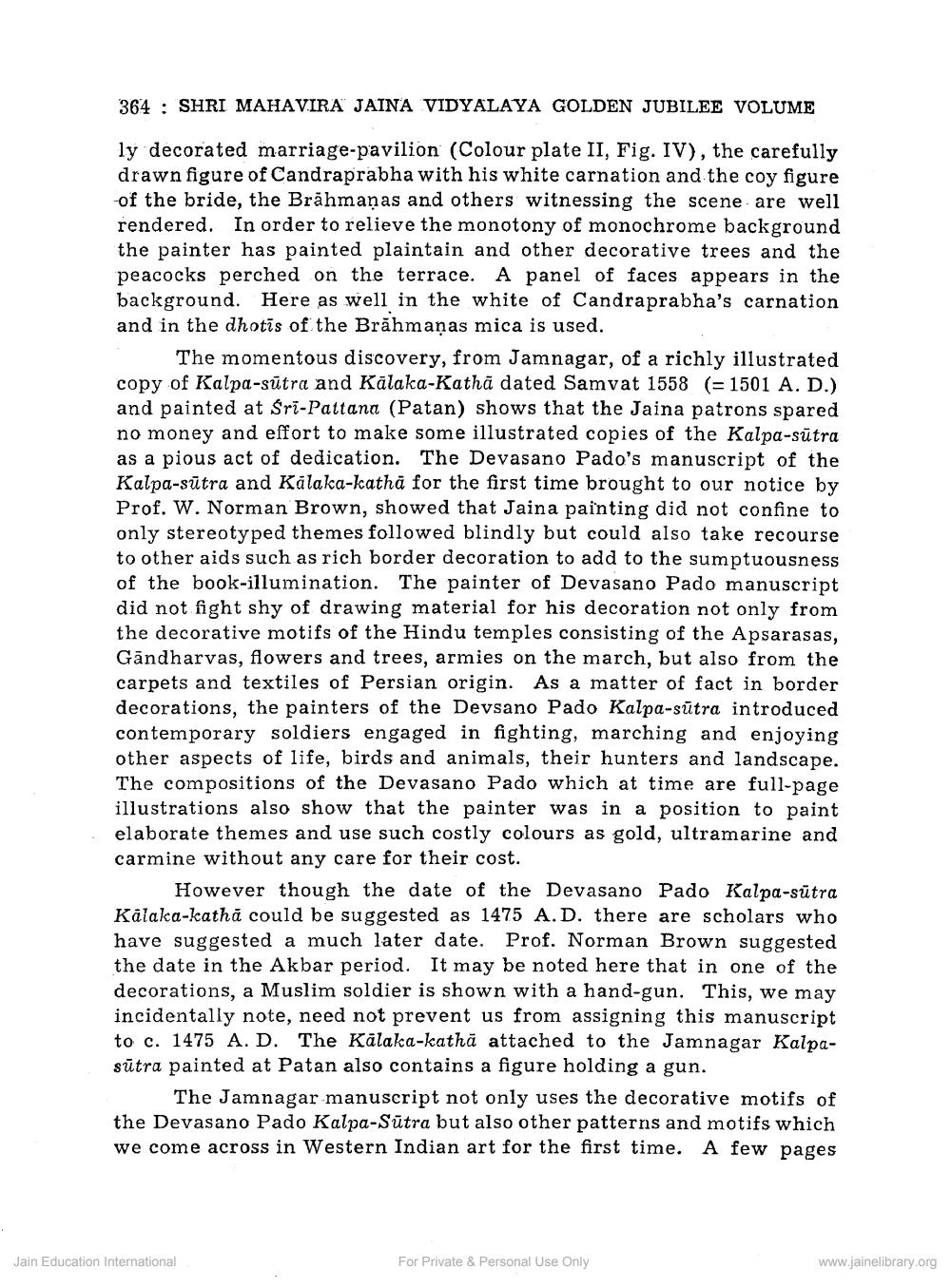________________ 364 : SHRI MAHAVIRA JAINA VIDYALAYA GOLDEN JUBILEE VOLUME ly decorated marriage-pavilion (Colour plate II, Fig. IV), the carefully drawn figure of Candraprabha with his white carnation and the coy figure of the bride, the Brahmanas and others witnessing the scene are well rendered. In order to relieve the monotony of monochrome background the painter has painted plaintain and other decorative trees and the peacocks perched on the terrace. A panel of faces appears in the background. Here as well in the white of Candraprabha's carnation and in the dhotis of the Brahmanas mica is used. The momentous discovery, from Jamnagar, of a richly illustrated copy of Kalpa-sutra and Kalaka-Katha dated Samvat 1558 (= 1501 A. D.) and painted at Sri-Pattana (Patan) shows that the Jaina patrons spared no money and effort to make some illustrated copies of the Kalpa-sutra as a pious act of dedication. The Devasano Pado's manuscript of the Kalpa-sutra and Kalaka-katha for the first time brought to our notice by Prof. W. Norman Brown, showed that Jaina painting did not confine to only stereotyped themes followed blindly but could also take recourse to other aids such as rich border decoration to add to the sumptuousness of the book-illumination. The painter of Devasano Pado manuscript did not fight shy of drawing material for his decoration not only from the decorative motifs of the Hindu temples consisting of the Apsarasas, Gandharvas, flowers and trees, armies on the march, but also from the carpets and textiles of Persian origin. As a matter of fact in border decorations, the painters of the Devsano Pado Kalpa-sutra introduced contemporary soldiers engaged in fighting, marching and enjoying other aspects of life, birds and animals, their hunters and landscape. The compositions of the Devasano Pado which at time are full-page illustrations also show that the painter was in a position to paint elaborate themes and use such costly colours as gold, ultramarine and carmine without any care for their cost. However though the date of the Devasano Pado Kalpa-sutra Kalaka-katha could be suggested as 1475 A.D. there are scholars who have suggested a much later date. Prof. Norman Brown suggested the date in the Akbar period. It may be noted here that in one of the decorations, a Muslim soldier is shown with a hand-gun. This, we may incidentally note, need not prevent us from assigning this manuscript to c. 1475 A. D. The Kalaka-katha attached to the Jamnagar Kalpasutra painted at Patan also contains a figure holding a gun. The Jamnagar manuscript not only uses the decorative motifs of the Devasano Pado Kalpa-Sutra but also other patterns and motifs which we come across in Western Indian art for the first time. A few pages Jain Education International For Private & Personal Use Only www.jainelibrary.org




